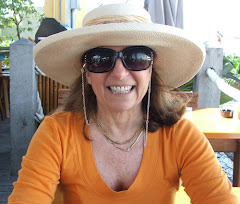Much more often than in the US, restaurants in Western
Europe will offer a multi-course menu that changes every day. Most places limit
this meal to weekdays, but you sometimes see one on Sunday and less often, on
Saturday. Sometimes there are two courses (a starter and a main or a main and a
dessert), and rarely, it’s all three. The menu might include some wine or a
coffee. Strangely, when wine is offered, most often you can’t substitute a soft
drink or even sparkling water. The menu of the day just is what it is.
The menu of the day will always cost less than the sum of
its parts, if you had ordered the sum of its parts or even if the sum of the
parts were available in the printed version. It’s usually advertised on a chalkboard
or some other temporary place. The daily menu might be a loss leader to tempt
patrons to stop in. So it’s a value meal. But it’s revealing that the elements of
the meal are unique to a particular day. It's not a menu item for less money. It’s a blind date for the restaurant,
not a mate.
Sometimes the restaurant has more menus than one to choose
from, and the difference in quality as you step up should be apparent.
The daily menu at a fine restaurant will be always better and
pricier than the one at the cheap place, but the meal that’s included will
almost certainly include dishes that would be at the low end of what’s generally
on offer wherever you are. So it’s not surprising that today’s cut of beef is a tough one, or
the main is a pasta dish that’s easy to make in quantity, or the starter is soup
rather than some carefully composed appetizer.
Here’s a menu at about the price of a normal main, with a
dessert bonus. This dish, hachis parmentier, is basically shepherd’s pie wearing a cheese hat, but
in France, even peasant food is yummy, and the portion is generous.
The benefits of selecting the menu of the day are numerous:
- You will be full when you finish it.
- You’re eating a better meal than you’re paying for. At the normal price, lunch could cost nearly twice as much.
- You might be benefiting from the savings on an ingredient that happened to be available in quantity at a low price.
- You get to eat the way the locals eat. Restaurants sometimes call it a tourist menu, but it isn’t really for us.
- An inexpensive big lunch can mean that you can spend less money on a smaller dinner (and eat a little healthier in timing, if not calorically).
- Dessert doesn’t have any calories if you don’t order it outright.
So here are my rules of the road for choosing a place with a
menu of the day:
- If the main ingredient in any course is expensive, the portion will be small.
- Spend at the middle or upper end of what you’d pay for a single course at the same restaurant, or you might be disappointed with what you get.
- Don’t hope that a steak will be a good cut of meat. It just won’t. Still, most cuisines have figured out how to disguise less-than-perfect fare with sauces.
- Experiment with the local cuisine. Restaurants might put crazy options on the menu for the local adventurer, but they won’t take big chances with the meal that everyone will eat today. This is a chance to eat like the locals without taking a large risk.
Lunch should be a special part of any travel day, and the menu of the day can help.




